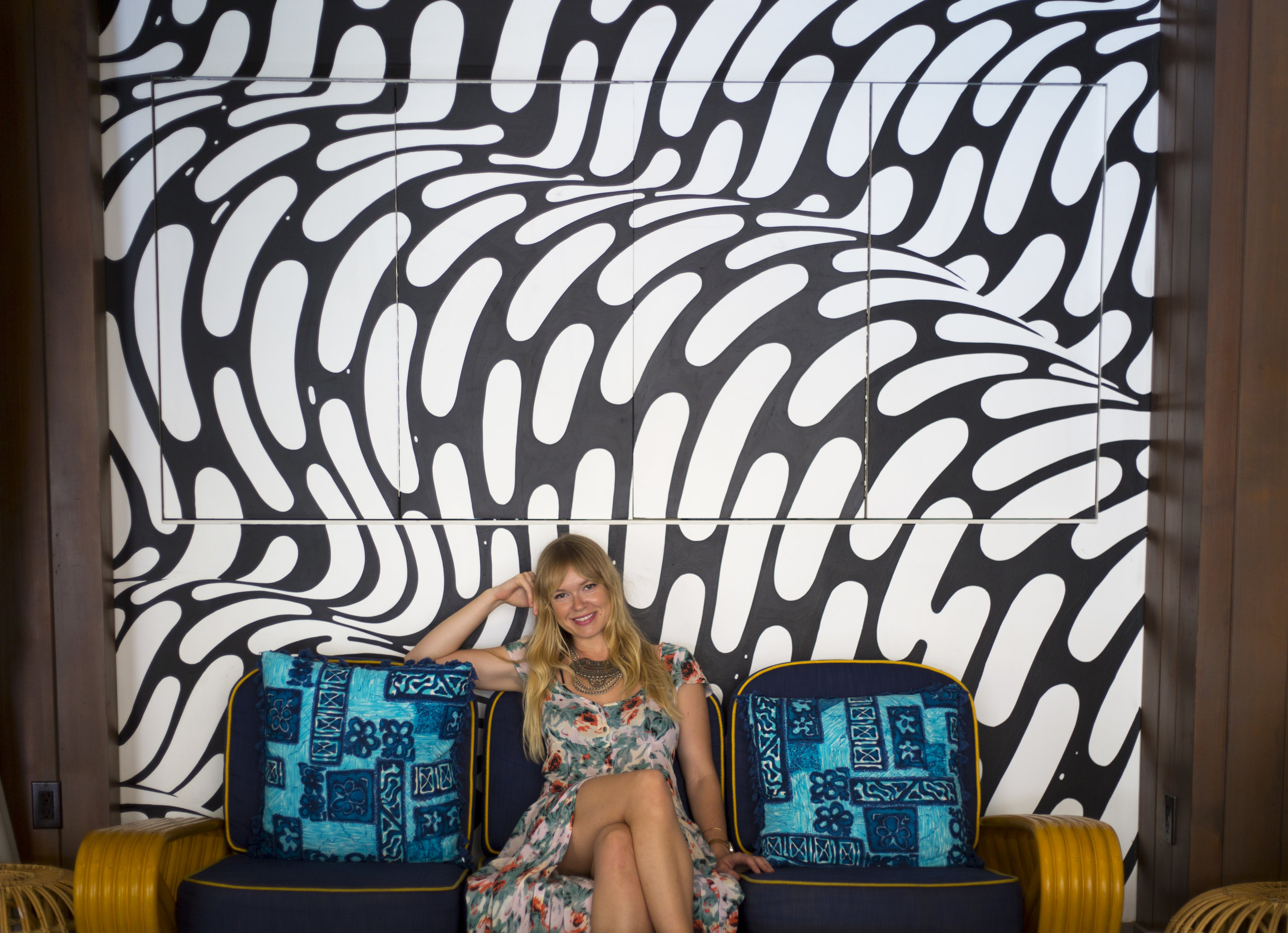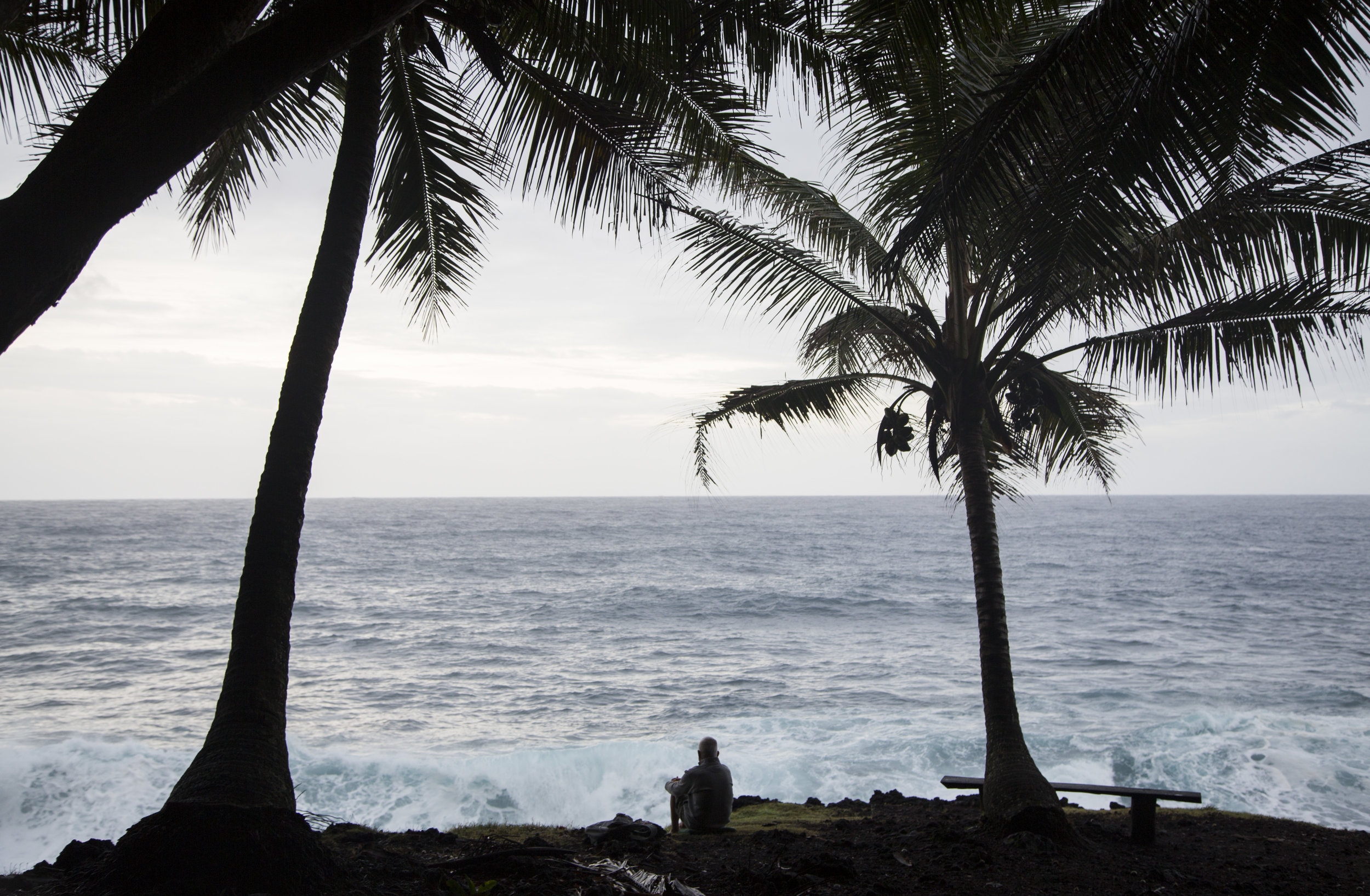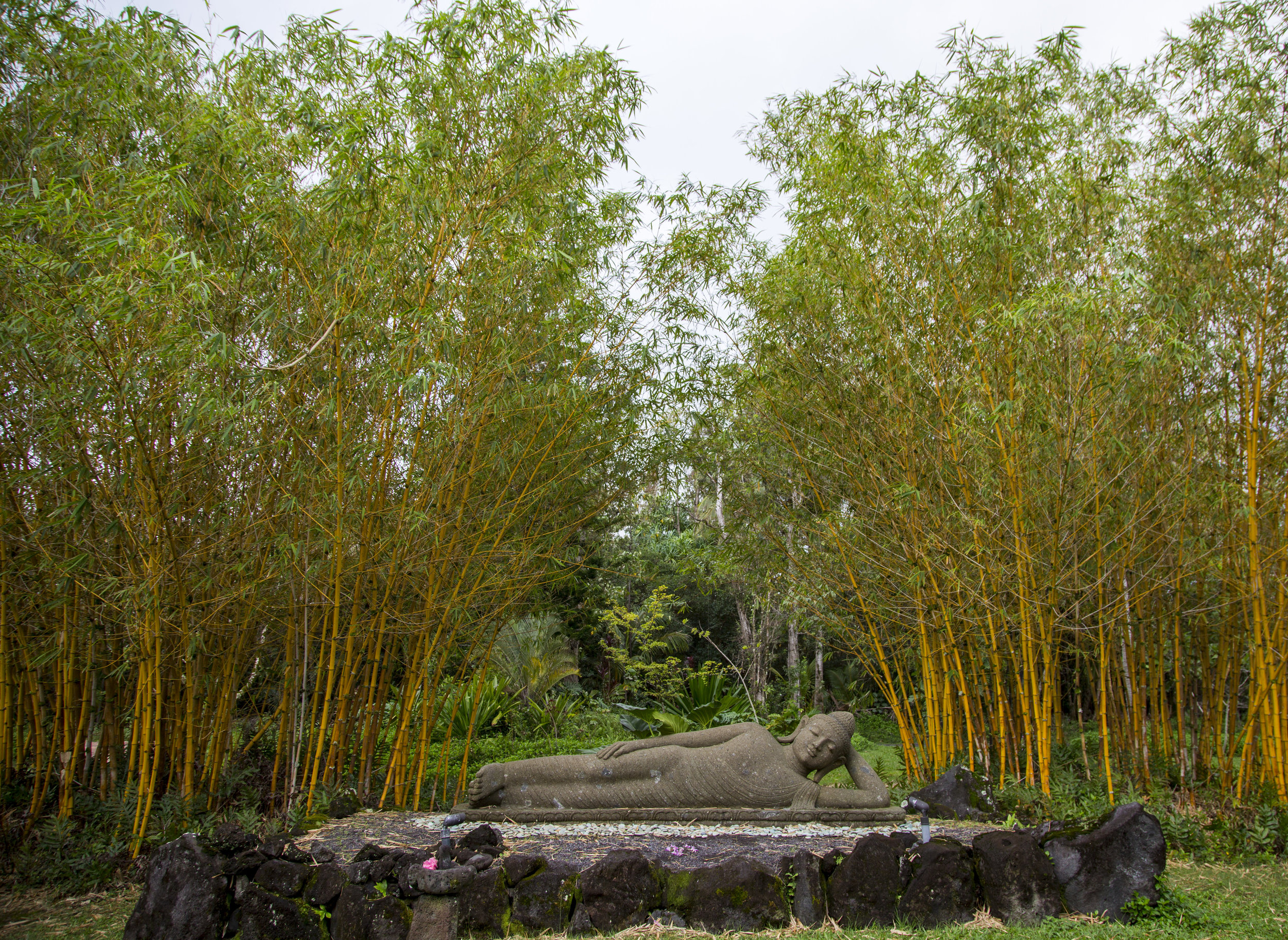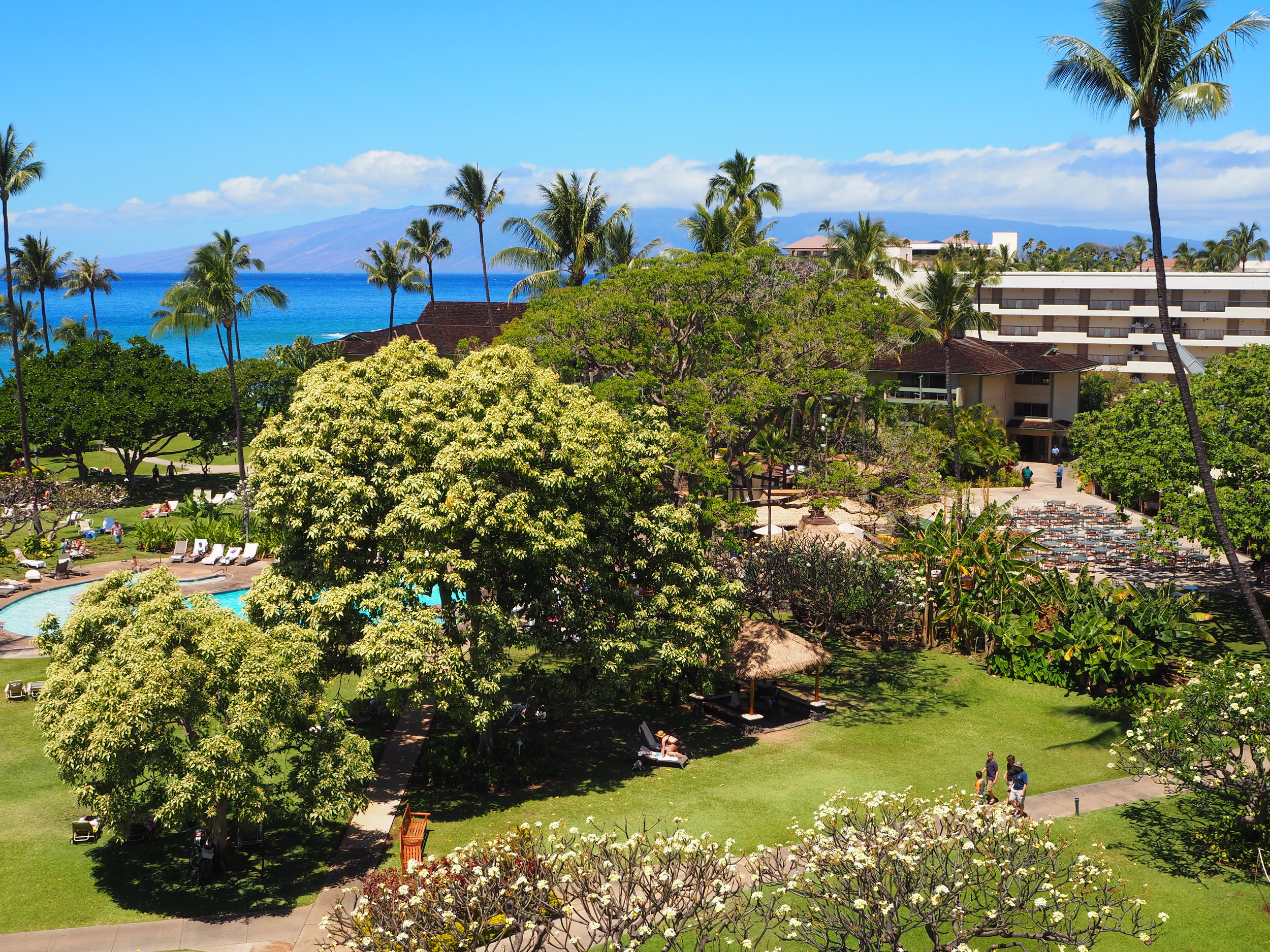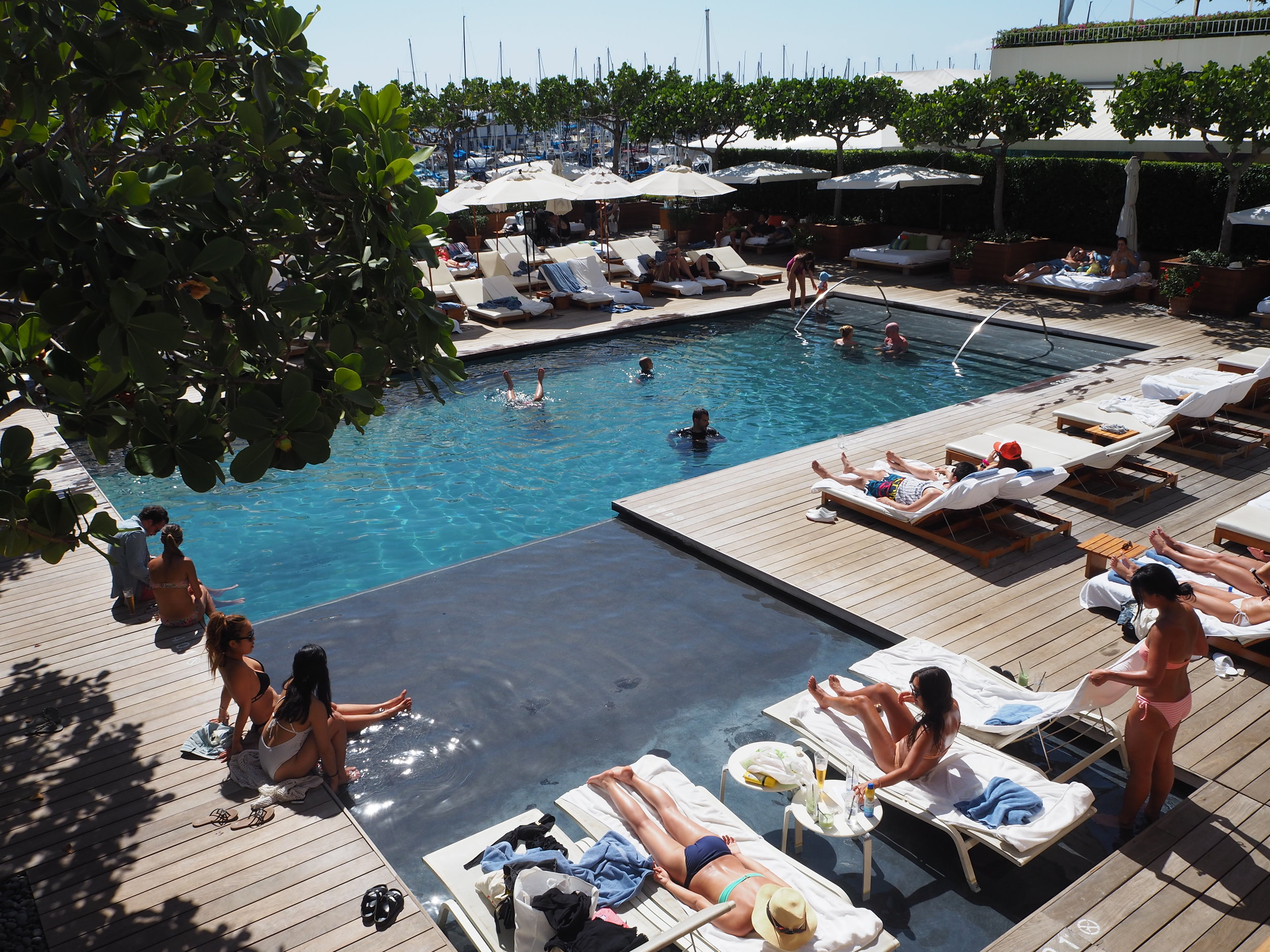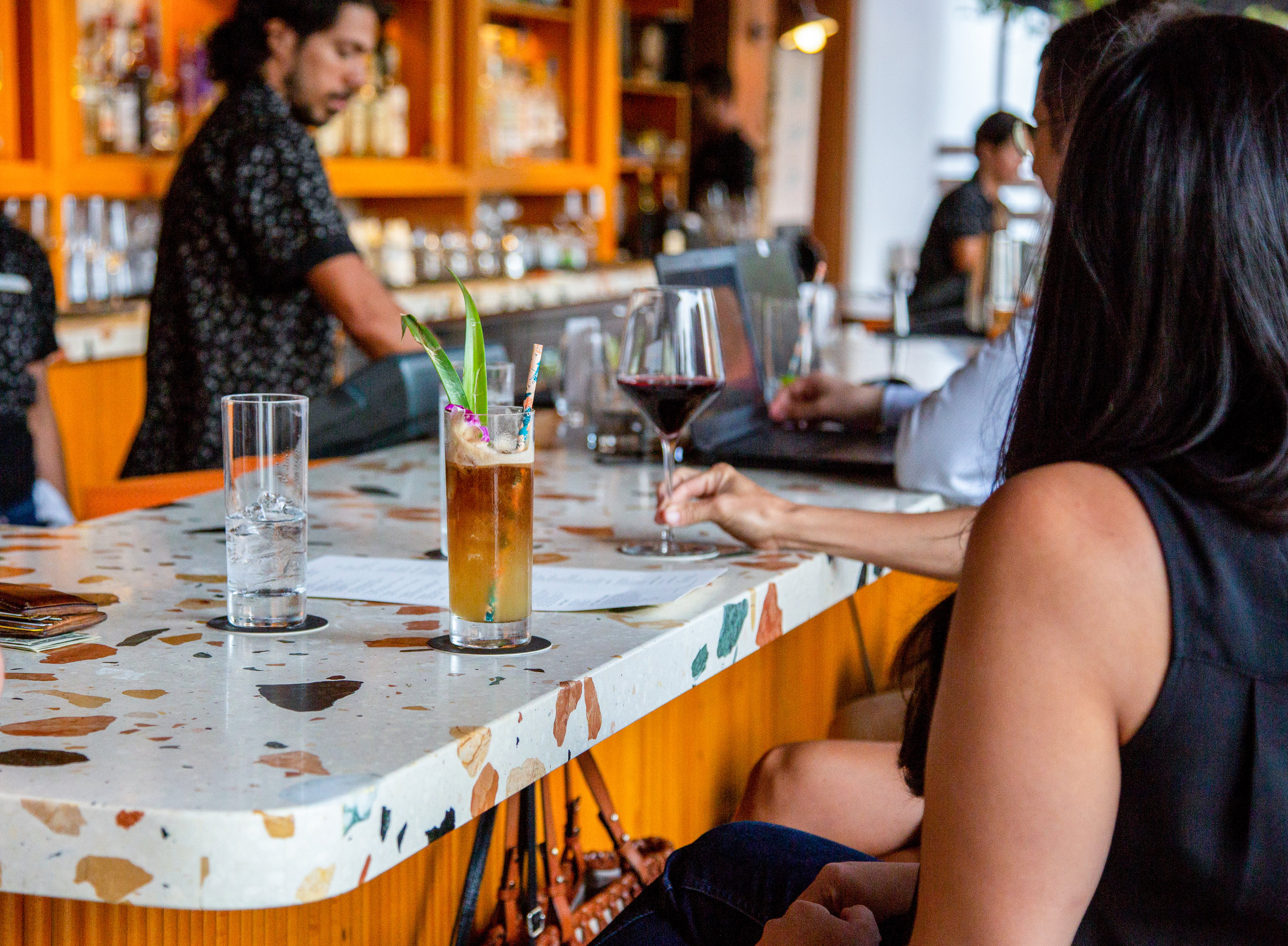8 Great Hawaiian Hotels
Stay Wild
How to Avoid the Housing Crisis
Story by Justin “Scrappers” Morrison // @scrappers
Photos by Sera Lindsey // @portablesera
There are juniper berries in my pocket.
Seeds crouched down like Olympic sprinters waiting to dig into dirt and grow.
I picked them on a hike recently because they smelled so good.
The aroma of blue clay, soft coyote paw, and the citrus sting of evergreen.
These berries have been burning a hole in my pocket for the last five hours. I’m flying through volcano smoke, above the deep blue Pacific ocean, to islands that have been invaded countless times. As a visitor to Hawai’i, it’s my responsibility to preserve what I came to experience. I won’t let these invasive seeds grow here, so I zip them up in my pocket till I get back home.
Hawai’i is a good friend. Its big, warm hugs of true aloha wrap around my cold winter-bleached body. It never asked, “What did you bring me?” It only asks, “What can I share with you?” Whalers and rich hippies who look like me have colonized and abused Hawaiian kindness for over 100 years, yet bright, innocent smiles still light the runway for my landing.
The neon orange flowers outside the baggage claim are descendants of invasive seeds brought by past travelers like me. Plants and critters have been brought here by people who want these islands to be a specific type of paradise. As their paradise grows beyond their nose, it takes over native habitat. Local bugs, plants, birds, and people have been suffering a housing crisis on an island with serious growth boundaries. The housing crisis is the reason I’m writing a hotel story. I’d rather stay in a neighborhood and be part of the local scene, but I’d be taking housing away from locals if I did that.
When you visit Hawai’i, and I hope it’s soon, please stay at one of the hotels on this list. Trust me, you’ll love these places.
Surfjack Hotel & Swim Club
412 Lewers St, Honolulu (808) 923-8882 surfjack.com
Have you ever lived in an apartment with a shared swimming pool?
It’s actually way cooler than it sounds. You end up making connections with people on a more personal level when you feel at home nearly naked.
The tile work in the Surfjack pool spells out: “Wish You Were Here.” You can see those words best from the cozy rooms above. They beckon you downstairs to the mid-century-inspired open living room scene. Neighborhood kids splash in the pool, beautiful strangers kiss new ideas together over fresh cocktails, I savor the crunch of fresh, locally-grown food, and visitors who came looking for aloha bask in its light shining from the faces who work here.
Kalani
12-6860 Kalapana-Kapoho Rd, Pahoa 1-800-800-6886 kalani.com
Love the chaos.
Change is here.
Right now, up the highway from the Kalani, volcanic fissures are opening up and bleeding red-hot lava all over the neighborhood — destroying homes, streets, and parked cars. The Hawaiian goddess Pele is working on a redevelopment project.
Staying in the Kalani’s treehouse, bungalows, or cottages will inspire you to live nicer with nature. Full walls are made of screen, so the wild ocean air engulfs you and lifts your spirits to the higher happiness known by manatees. People walk around fully blissed out and forgetting where they were even headed. I was headed to the communal dining patio, but got distracted by a wild boar family eating fallen fruit. I almost missed out on my own feast of local fish, organic grains, and fresh fruits and veggies. The food here will reset your guts like a good massage does to your muscles.
The Kalani is a true community. Since 1975 outsiders have come seeking lifestyles beyond the limitations of mainstream society. All sorts of openness are exercised and honored here. People practice yoga, meditation, lucid dreaming, sustainable farming, shamanic rituals, and gender bending. I exercise my freedom at the clothing optional pool.
If you’re open and willing to experience a renewed outlook on yourself and others, we’ll bump into each other at the Kalani.
Ka’anapali Beach Hotel
2525 Kaanapali Pkwy, Lahaina (808) 661-0011 kbhmaui.com
Ka’anapali is the most tourist-friendly side of Maui.
I used to avoid going there since I’m a cool teenager who would never be caught dancing in a cheesy luau dinnertainment show with his drunk auntie, but that all changed when I stayed at this classic beachside hotel. I experienced the authentic good intentions of old-school Hawaiian tourism.
Truly rooted respect for Hawaiian culture is infused in all the touristy offerings. The taro ponds growing in the courtyard are part of the Cultural Garden, teaching guests about native and introduced flora and fauna. Locals teach classes about Hawaiian language, crafts, and how to cut a pineapple.
The whale-shaped swimming pool will always remind me of the time I heard whales singing in front of the hotel. I held my breath as long as I could in the ocean. The sound went right past my ears and I could feel the whales voices in my bones. Staying here was not the superficial experience I thought it would be.
Kula Lodge
15200 Haleakala Hwy, Kula (808) 878-1535 kulalodge.com
Nuzzled on the side of a long-dormant volcano, right outside the entrance to Haleakala National Park, Kula Lodge floats in Maui’s mountain air
The upcountry lodge vibes are unlike anything you’ll experience beachside. Kiawe wood burns in the fireplace and tropical flowers of impossible shapes bloom. Horned chameleons hunt bees in avocado trees outside your room’s wooden walls.
If Teddy Roosevelt had a dropout hippy phase he would have spent it here. Old Teddy would have tripped out on the podhuts that cascade down the hill below the wood-fired pizza oven.
This place is special and will give you a view unlike any other.
Hawaiian Island Retreat
250 Lokahi Rd, Kapaau (808) 889-6336 hawaiiislandretreat.com
My first night in the yurt, the solar power ran out and the room went dark.
The sounds of nature perked up outside, the breeze felt more alive, and I realized I found the getaway I hoped for.
This retreat center offers outdoor spa treatments designed by lead therapist and inn-keeper Jeanne Sunderland. Her healing energy skills are rooted in la‘au lapa‘au, the traditional Hawaiian art of healing with plants, and lomilomi, traditional Hawaiian massage.
The main building is designed to use sunlight and ocean breeze cooling, saving the solar electricity to use for reading in bed. Every detail from the organic shampoo to the refillable water bottles is a sustainable effort to stay self-sufficient within nature’s limits.
The Modern Honolulu
1603, 1775 Ala Moana Blvd, Honolulu (808) 943-5800 themodernhonolulu.com
My little boy calls Waikiki “Hotel City.”
This city looks like Los Angeles but is right on the edge of a beach that was once private to Hawaiian royalty. Luxury hotels like The Modern have been built in a place full of natural luxury. The view and the extremely surfable waves are a taste of luxury that I will never get used to.
The avocado toast made by local chefs, the artwork made by local muralists, and music piped into the underwater speakers within the pool are a luxury I can live with.
While lounging poolside, I began to understand the yachtsmen. I smoothly sailed the imaginary ship “platinum poodle” and raised a champagne glass of local honey-infused kombucha to Hotel City.
The Laylow
2299 Kuhio Ave, Honolulu (808) 922-6600 laylowwaikiki.com
I’m swinging in a hanging wicker woven chair, surrounded by modern design sensibilities and the dreamy exoticism that WWII brought back to the suburbs.
This is the Hawaiian vacation experience most folks come to Honolulu hoping for.
The Laylow rooms are spacious and minimally curated with lovely things. The Hideout is their open air chill zone. Classic tiki torches burn in the breeze, Stumptown coffee pours at the bar, amazing food is served fireside, and happy guests laugh about how dumb their stress back home is.
The street below buzzes and thumps with the excitement of visitors running around an exotic city looking for what we’ve already found, a simple place to lay low.
Iao Valley Inn
80 Iao Valley Rd, Wailuku (808) 633-6028 iaovalleyinn.com
There is a place on Maui where sacred drops of water gather together and run down a valley as a river.
I have touched this water and it is the purest thing I have ever felt. Dipping into it cleaned my soul and brought me to tears. A crying baby man with his toes in the water, an innocence was rekindled.
The Iao Valley Inn was originally built at the river’s edge as a family house, but as the kids grew up and moved away, the parents opened the doors to visitors. It’s a very intimate bed and breakfast type setting.
I almost didn’t put this place in the story because I want to keep it a secret, but if you’re reading these words out of all the words in the Universe, it must be destiny that you’ll love this secret spot as much as I do.
This story was made with help from our friends at the Hawaii Tourism Authority



